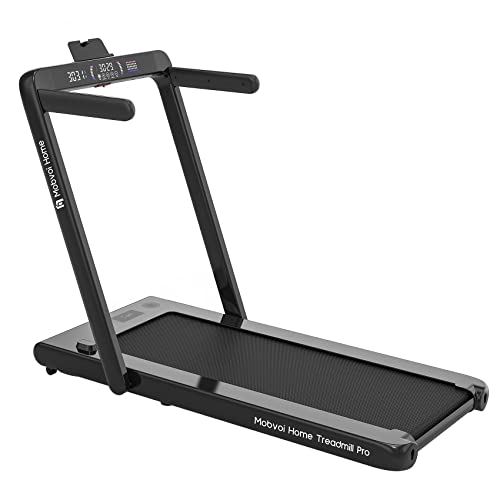The Comprehensive Guide to Home Treadmills: Everything You Need to Know
With an increasing focus on physical fitness and wellness in today's hectic world, home treadmills have become a popular choice for those aiming to instill routine workout into their regimens. Whether for aesthetic improvement, convenience, or fitness tracking, treadmills offer a flexible solution for lots of fitness enthusiasts.
This post checks out different elements of home treadmills, providing insights into their functions, advantages, and important considerations for prospective buyers. It also addresses common concerns and misunderstandings about these workout machines.
Table of Contents
- What is a Home Treadmill?
- Benefits of Having a Home Treadmill
- Types of Home Treadmills
- Key Features to Consider
- Maintenance Tips for Your Treadmill
- FAQs about Home Treadmills
- Conclusion
What is a Home Treadmill?
A home treadmill is a physical fitness device designed for running or walking while staying in one location. Unlike traditional running outside, it enables people to exercise in the convenience of their homes. Treadmills can be powered by electrical power or can be manual, requiring the user to propel the belt with their own effort.
Benefits of Having a Home Treadmill
The benefits of owning a home treadmill are many. Below are some essential benefits:
- Convenience: Users can exercise at any time, avoiding weather constraints or gym schedules.
- Time Management: Reduced travel time to and from a gym, enabling quicker workouts.
- Privacy: The convenience of working out in a personal environment, suitable for those who feel self-conscious in public settings.
- Versatility: Adjustable speeds and inclines offer varied exercise options, accommodating various fitness levels.
- Integration with Technology: Many modern treadmills come equipped with physical fitness apps and tracking systems that monitor progress.
Kinds Of Home Treadmills
Home treadmills can be classified into numerous types, each serving different needs and preferences:
| Type | Description |
|---|---|
| Motorized Treadmills | Electric motors that permit users to adjust speed and slope with push-button controls. |
| Manual Treadmills | Needs physical effort to move the belt, normally more compact and portable. |
| Folding Treadmills | Space-saving styles that can be folded when not in use. |
| Treadmill Desks | Enable users to stroll while working, integrating physical fitness into their everyday jobs. |
Choosing the Right Treadmill
Think about these factors when picking the appropriate kind of treadmill for personal usage:
- Space Requirements: Ensure the treadmill fits conveniently in your designated workout area.
- Speak with Reviews: Look at user feedback and professional evaluations to understand efficiency and reliability.
- Budget plan: Set a clear spending plan, as costs can differ commonly.
- Usage Frequency: Assess how often the treadmill will be utilized to identify resilience and features needed.
Key Features to Consider
When shopping for a home treadmill, it's crucial to examine specific features that enhance the exercise experience. Certain functions to focus on consist of:
- Motor Power: Look for a motor with at least 2.0 CHP for reliable performance.
- Running Surface: A bigger running surface area is more suitable, especially for those who want to sprint or take longer strides.
- Incline Options: Adjustable inclines increase exercise strength and aid engage various muscle groups.
- Cushioning System: Good shock absorption can considerably reduce the effect on joints and prevent injuries.
- Innovation Integration: Built-in heart rate screens, Bluetooth connectivity, and integrated exercise programs can enhance your fitness journey.
Upkeep Tips for Your Treadmill
A properly maintained treadmill can last for many years. Regular maintenance is vital to guaranteeing optimum efficiency. Think about these upkeep suggestions:
- Keep It Clean: Wipe down the surface area frequently to get rid of dust and sweat.
- Oil the Belt: Apply silicone lube according to maker standards to lessen friction.
- Look for Wear and Tear: Regularly inspect the belt and deck for indications of damage or excessive wear.
- Check the Motor: Clean dust from the motor location and guarantee correct ventilation to avoid getting too hot.
- Follow User Manual: Always describe the user handbook for specific upkeep guidelines associated with the design.
FAQs about Home Treadmills
1. Are home treadmills effective for weight loss?
Yes, home treadmills can be really effective for weight loss if utilized regularly as part of a well balanced diet plan and physical fitness programs.
2. Just how much space do I require for a treadmill?
While it differs by model, a normal home treadmill will require a minimum of 6.5 feet in length and 3 feet in width.
3. Do I require special shoes to utilize a treadmill?
While special shoes aren't required, investing in great quality running shoes can help prevent injuries and boost convenience.
4. Can I watch television or listen to music while using a treadmill?
Definitely! Electric Treadmill of modern-day treadmills have functions that enable users to see television or listen to music through built-in speakers or through Bluetooth connections.
5. For how long should I use a treadmill each day?
For optimum health benefits, go for a minimum of thirty minutes of moderate-intensity exercise on the treadmill most days of the week.
Owning a home treadmill opens the door to hassle-free and versatile exercises ideal for individuals of all ability levels. Understanding the various types, essential functions, and proper maintenance can assist ensure that your investment remains efficient and satisfying. As physical fitness becomes a top priority for numerous, home treadmills present an exceptional opportunity for individual health and wellness, making it easier than ever to integrate exercise into life.
With the ideal resources and guidance, a home treadmill can become an essential part of one's physical fitness journey, helping individuals attain their objectives in a sustainable way.

